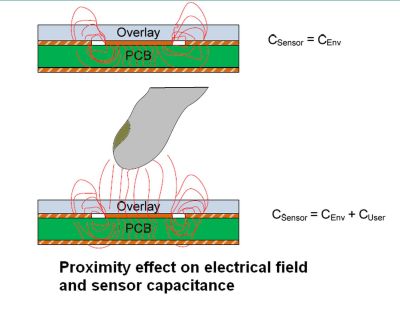New ICs sense human proximity to keep the RF output of consumer devices within regulated levels.
David Wong, Semtech, Wireless and Sensing Products Group
Whether for personal consumption or work, wireless devices are used daily. As the number of devices continues to grow, they must provide robust connectivity and ample battery life while also complying with industry regulations.
Mobile equipment manufacturers are designing wireless devices that deliver higher throughput to bring better consumer experiences. In 1996, the Federal Communications Commission (FCC) adopted practices to ensure RF-enabled consumer devices adhere to regulated levels of RF output power in the presence of a human body. These limits are rated in terms of Specific Absorption Rate (SAR), which is a measure of the amount of RF energy absorbed by the body when using a wireless device.
In the U.S., the FCC sets the exposure limit for the general public to be a SAR level of 1.6 W/kg (over 1g of tissue) with a separation distance of 25 mm from the user. The European standard is 2 W/kg (over 10g of tissue) with a separation distance of 5 mm from the user. Each new product must be tested for compliance before it can be shipped to consumers. That is the reason for the development of intelligent sensors. With intelligent sensors, OEMs can help deliver better consumer experiences by offering not just automatic compliance with SAR levels, but also a variety of other benefits, including better performance and RF connectivity for connected devices. These sensors intelligently sense human presence near a mobile device and enable advanced RF control when a user is close by—delivering high-quality connectivity in consumer smartphones, laptops and tablets exactly when consumers want and need it.
When designing consumer devices, incorporation of smart sensors enable a device to meet SAR compliance requirements while maintaining peak device performance. For example, a smart sensor will lower RF output power if the user holds the phone while using it. If the phone sits on the table while the user makes a call via a wireless headset, the RF output power can remain high, thus ensuring a robust connection. Alternatively, a smart sensor built into a laptop would deliver higher connectivity performance in a Zoom meeting if the user is not typing on the keyboard.
As the wireless market advances further, more and more mobile phones will support 5G networks. A September 2021 report by analyst firm IDC predicted that by the end of 2022, 5G units could make up more than half of all smartphone shipments.
One challenge with 5G smartphones—because they have, on average, six antennas to handle both 5G and legacy network requirements—is maintaining SAR compliance. In addition, 5G smartphones streaming video—among the most performance intensive tasks for a phone—are expected to account for 73% of all mobile data traffic by 2023. Through use of smart sensors, OEMs can deliver high-quality 5G/Wi-Fi 6 connectivity and ensure users get the best experience from their devices.
Inside a smart sensor
To understand the workings of a smart capacitive sensor, it is helpful to review the functions of one such device, a four channel SAR controller (SX9330). It accepts four sensor inputs and can

accurately discriminate between an inanimate object and a human body. When the chip senses a human body nearby, it sends an alert via an I2C serial bus to its host processor to indicate detection. The sensor input can be relatively simple and is often not much more than a copper plate on a PCB that is surrounded by a ground shield for noise immunity. Both the plate and the ground shield are connected to separate inputs to the SX9330 device.

The sensor detects the presence of a conductive object usually a finger, a palm, and so forth. When there’s no conductive object close by, the sensor only sees an inherent capacitance value created by the interaction of its electric field and the environment, in particular, nearby grounded areas. An approaching conductive object modifies the electric field around the sensor, and the total capacitance the sensor sees will rise.
The SX9330 contains an auto-calibrator that regularly adjusts sensor sensitivity for changes in temperature, humidity, and electrical noise. To save power, and because proximity events are relatively slow by nature, the chip is idle most of the time, only awakening for regularly programmed scan periods.






